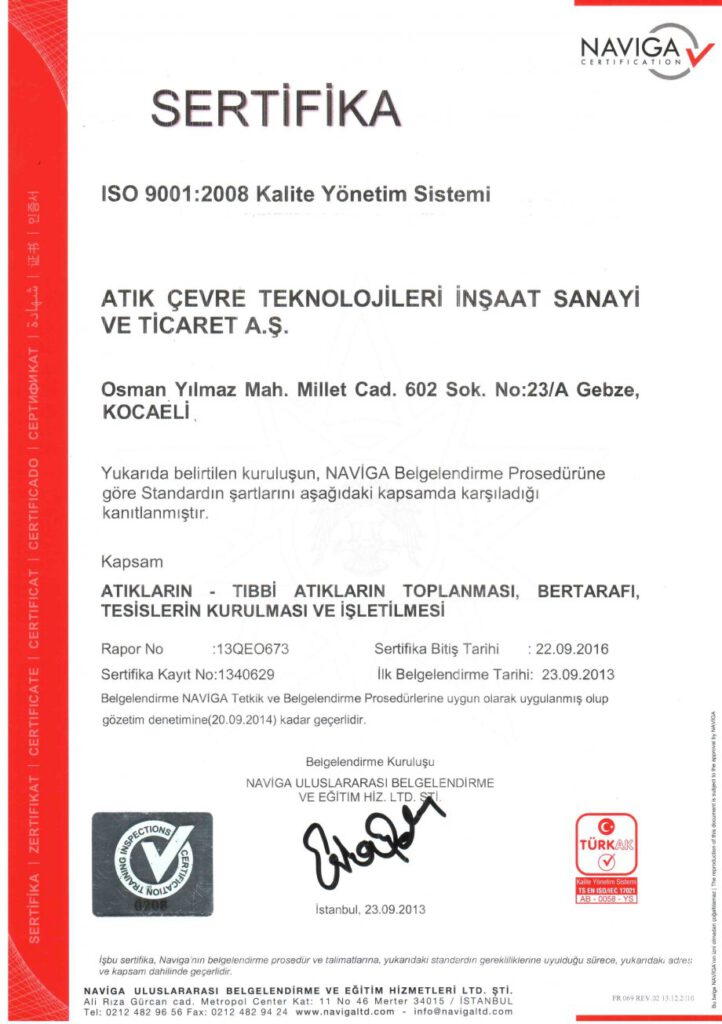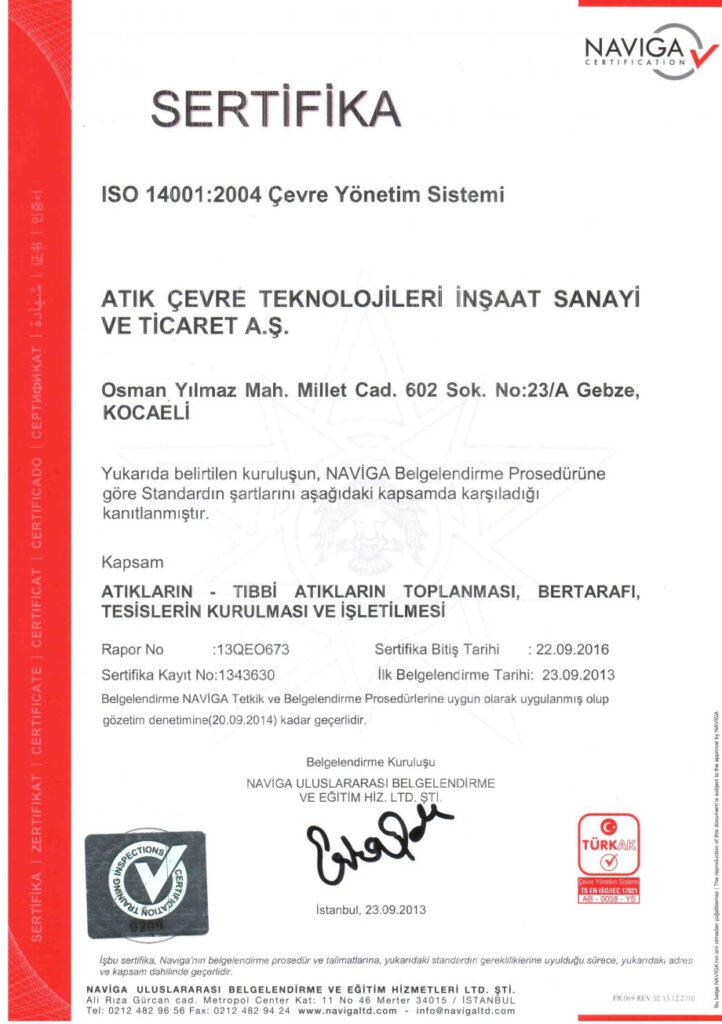Our documents

9001 - Quality Management System
Today's world has become very small, and great developments in information, technology and communication have pushed societies to a fierce competition and an economic race where new developments are experienced every day. Surviving in the current world order can only be achieved by ensuring the production of goods and services in line with customer needs and expectations in all sectors. This will only happen with the implementation of the Quality Management System, which covers all stages from the design stage to production, marketing and after-sales services and aims at continuous improvement. Today, TS EN ISO 9001 Quality Management System Standards on Quality Management System have become International Standards that have found the most interest and application area since its publication in 1987.
TS EN ISO 9001;
The development of quality understanding in the organization,
Increasing profits, productivity and market share,
An effective management,
Cost reduction,
The satisfaction of the employees,
Improving communication within the organization,
Wide monitoring and control in all activities,
Decrease in returns,
Decreasing customer complaints, increasing satisfaction,
It provides national and international applicability.

14001- Çevre Yönetim Sistemi
It is now accepted all over the world that the resources of our world, which is getting smaller day by day, are not infinite, the environmental impacts of products and activities are not local and regional, but global. This awareness has brought with it the need to control environmental impacts with market forces rather than legal practices.
In addition to meeting the expectations and needs of today's consumers at the highest level, they demand that they are valued, respected and questioned in the market. These developments revealed the fact that there is a need for management systems that will enable organizations to keep their interactions with the environment under control and to continuously improve their environmental activities and achievements.
The Environmental Management System is known all over the world with the ISO 14001 Standard. The recognition and implementation of the Environmental Management System in international organizations after the ISO 9001 Quality Management System Standard has been very rapid.
TS EN ISO 14001;
Increasing compliance with national and / or international regulations,
Increasing environmental performance,
To gain an advantage in international competition,
Increasing the company's reputation and market share,
To reduce costs and increase efficiency by improving cost control,
Being prepared for emergencies (earthquake, fire, flood, etc.) and accidents, etc. Reducing the incidents,
To control and reduce pollution starting from the source,
Saving input materials and energy,
Facilitating the obtaining of permits and authorization documents,
It provides acceptance in the global market.

OHSAS 18001is a system developed to minimize the risk of a possible occupational accident that may occur in the workplace and to lay down the minimum requirements for fulfilling legal obligations regarding occupational health and safety. OHSAS 18001 is an international standard that defines the conditions for health and safety management systems in order to enable the organization to control its own risks and improve its performance.
OHSAS 18001 is an effective tool that can be applied to all kinds of business sectors and organizations, and is used to systematically address occupational health and safety activities in line with the general strategies of the organizations and to analyze them within the framework of continuous improvement approach.
OHSAS 18001 certification aims to identify and control all risks arising from the organization's ordinary activities and extraordinary situations. OHSAS 18001 focuses on the continuous improvement of organizations in order to prove that they comply with the Occupational Health and Safety policy.
OHSAS 18001’in Faydaları
- Ensuring compliance with national and international conditions and laws regarding occupational health and safety
• Gaining advantage in competition by increasing the prestige of the organization
• Improving the quality of workplaces, employee morale and commitment to corporate values
• Identifying potential resources or situations by defining, keeping the health and safety risks of the organization under control
• Ensuring the trust and loyalty of customers
• Reducing the time and cost of compliance with national laws and world standards
• Ensuring the protection of labor and other resources
• Possible accident and compensation that may arise from events, etc. reducing costs
• Establishing a system in accordance with the law, where targets can be implemented with management programs
• Preparing action plans against emergencies (earthquakes, fires, floods, etc.) and accidents
• Death, disease, injury, Preventing undesirable events that cause damage and other losses to a great extent
• To reduce the loss of time in production by minimizing accidents and to increase efficiency
• Developing a safety culture
• Providing a dynamic and qualitative mechanism for hazard and risk management